News
Rose & Fire in Golf Digest Stix!
Full text from the article below:
"There’s something about Rose & Fire’s new line of Skull headcovers that resonates with us. Perhaps because having them in your bag is a pretty innocuous way to be a little rebellious on the course. Designers at the California-based company say they took inspiration from social media and infused it with a little of their own commentary to create these leather offerings for drivers, metal woods, hybrids and putters that retail for $49 to $59. The materials come from a local tannery, with the leather treated to be water-resistant. What has impressed me from the start since Mike Buchfuhrer started Rose & Fire in 2013 is the quality of the company’s craftsmanship. In this instance, it’s the superior appliqués that are used, which look both clean and precise. Everything is stitched and sewn at the company shop, making them authentically made in the U.S.A. All this makes it a smart way to show your wild side. For more info, click here. —Marty Hackel/@MrStyleMH"
Click HERE to check out these covers! 
Rose & Fire GROUP!

R&F now has a Golf Group hosted on Facebook!
This group is very different from the a Facebook page. In the group YOU can post in the feed, and start golf-related conversations. There will also be giveaways to get the group started off with R&F gear! Golfers are already sharing pictures, stories, and other fun items. You can join HERE. Thanks!
Ballistic Nylon vs. Nylon Canvas Headcovers, What's the Difference?

Above is a picture demonstrating the differences between ballistic nylon and nylon canvas. Ballistic nylon was developed in the 1940s by DuPont in an attempt to make a bulletproof fabric (hence the name "ballistic") for our military. The attempt failed, so please don't try to stop bullets with your headcover. However, they did make an incredibly durable lightweight fabric. It has since been adapted for use in premium rugged luggage and other travel gear.
| Ballistic Nylon | Nylon Canvas |
|
|

Nylon canvas is similar, but differs in important ways. Ballistic nylon and nylon canvas both are woven with what we call a "plain weave" (see diagram). What this means is that in each direction the yarns are woven under one perpendicular yarn and over the next, alternating one by one. The same applies in the other direction. It is a simple weave and produces a nice, stiff fabric. Ballistic nylon, however is what we call a 2x2 plain weave, where 2 yarns are next to each other in each direction. 2 yarns go over 2 perpendicular yarns, then under the next 2, over the next 2, and so on. This is called a "basket weave". It is very strong and makes a stiffer fabric. Nylon canvas is a 1x1 weave, which produces a more fluid drape (but not as fluid as a twill such as denim) and a finer feel.
In short, ballistic nylon is stronger, stiffer, and has a coarser weave texture. Nylon canvas has a more fluid drape, finer weave texture, and is available in many colors.
Additionally, because we get our ballistic nylon from USA military suppliers it only comes in black (that's all the military orders). Nylon canvas, on the other hand, is often used in backpacking and comes in many, many colors including red, orange, yellow, green, and blue. If you have more questions please feel free to email me at mike@roseandfire.com. Thanks for reading!
Ball Mark Repair How-to

Properly repairing ball marks is just good manners. Luckily it's easy and quick. Here's how to do it:
1. Insert your ball mark tool behind the ball mark angled away from the ball mark.
2. Move the handle toward the ball mark. Your tool should be approximately vertical at the end of this step. Avoid twisting, "scooping," or prying motions. These damage the greens.
3. Repeat steps 1 & 2 a few times around the mark. If a piece of the green was removed repeat steps 1 & 2 a few times at different spots around the mark to gently stretch the grass over the hole.
4. Tamp down the grass over the mark with your putter to restore a smooth surface to the damaged area.
That's it!
Putter Materials: What's the Difference? Guest Blog!
By Kyle Sears of Kingston Putters

We often get asked what the major differences are between our carbon steel and stainless steel putters, and to take that step further German stainless steel. Many of the differences relate to the player's personal preference in regards to their perceived feel of the different materials and what they are ideally looking for in a putter. Others prefer one material over another when it comes to the level of maintenance required to maintain the look the customer desires. The idea of how a putter feels is very subjective and takes into account not only the material itself, but the depth of the face milling, pocket depth, weight, shaft, grip material, ball choice, etc....Through testing, we have found that sound really is the #1 determining factor of what makes a putter feel different to the player. With that being said, each player's interpretation of how putters of differing designs sound varies drastically.
The general consensus is that if you look at what we have dubbed a ''feel spectrum'', with carbon steel being at one end of the spectrum and standard 303 stainless at the other end, players typically will gravitate towards one end or the other, as to what they consider to be the better feeling material. From a manufacturing standpoint, the chemical makeup of carbon steel, should yield what would be considered a softer putter, but again that term is so relative to the other factors built into the putter, so it's hard to make a steadfast rule when it comes to declaring a putter softer over another.

One category clear distinctions exist between carbon steel and stainless is when it comes to overall maintenance. CNC milled carbon steel putters come off a mill essentially acting as a sponge for moisture, humidity and oxidation. While some players like the look of a rusty putter (think Geoff Ogilvy and Aaron Baddeley,) depending on your local atmospheric conditions, the rate at which raw carbon putters will oxidize varies greatly. Most players prefer some sort of protective coating (oil can finishes) or plating (nickel) to keep their putter from oxidizing over time. These options can create a different feel than the putter originally had in it's raw state as well, so there are many things to consider with carbon steel putters.
On the flip side is stainless steel. These putters come off a mill in a raw state, similar to the carbon putters, but their chemical makeup is designed to repel the effect of oxidation and will be effected very little by atmospheric conditions (hence the 'stainless' part of their material name.) From a molecular level, this material has very little carbon makeup and therefore is considered a harder material. One advantage however is there is no need to apply any sort of protective coating to stainless to keep it from oxidizing. A light bead-blasting will go a long way to protecting a stainless putter, while reducing glare at the same time (think Rickie Fowler's putter.) The wild card of the bunch is German stainless steel. Typically used in surgical and dental tools, this variation of stainless steel has become popular over the years. Since Tiger Woods used a German stainless putter to win so many majors, the idea of this strain of stainless being the end-all, be-all of putters has continued to rise into mythical proportions.
From a molecular standpoint only, the German stainless we use has a slightly, I'm talking minute, amount higher carbon content. The feedback from our customers that have tried both regular 303 stainless prototypes and our German stainless versions of identical models, have preferred the German stainless almost hands down. In reference to the feel spectrum we discussed earlier, most players place the German stainless models about 3/4 of the way towards the regular stainless end, while representing the best of both materials. Now, that may be the placebo effect at the highest level or not. What we do know is the disparity of cost between the two stainless offerings is not that dramatic, so we choose to use German stainless with all of our stainless steel models. We feel like this gives our players the option of trying a material that has been deemed unattainable for the general masses prior to us offering this option.
To summarize, we feel like the preference of our players is not so much a factor of the material the putter is made of, but more so all the factors that contribute to the perceived sound a putter creates when it makes contact with the ball, and to classify one putter over another as being softer is a tough determination to make on behalf of a player. It's important for us, as a manufacturer, to do player testing in real world conditions to make sure that when we produce our retail putters, we feel like we've put in the time to make the correct design decisions, resulting in what we feel are the best putters available.
Kyle Sears
kingstonputters@gmail.com
708-466-8172
MannKrafted X Rose & Fire Behind the Scenes Handmade Golf Ball Markers!
When LaMont from MannKrafted and I decided to team up on these ball markers we were adamant that they had something unique and special about them. We weren't just slapping a logo on a stamped disc. There had to be creativity, passion, and art behind them. The story of their creation must make them special. Here it is.
First, we start out with a sheet of copper mined in USA. It is then cut into connected discs with the water jet. As you can see below there are little tabs. This is because the water jet can't cut a complete circle. Otherwise the markers would fall into the tank.

The next step is de-burring. After cutting metal there is often a sharp, thin metal lip on at least one of the sides. You can see this above. Using a grinding wheel LaMont de-burrs and removes the tabs on the sides. After this he puts the markers into a tumbler--this gives a nice matte texture to the markers and further smooths out any roughness. See below.

Now the ball marker is ready for stamping. Using a ball peen hammer and various stamps we can texture the surface and edges.

Once the desired texture is achieved we can stamp artwork on the front and the golfer's initials in the back--each one is custom made. After stamping the marker is buffed and polished. The edges in particular need work (as you can see above they're still not smooth after tumbling.

After stamping the next step is paintfill. This is a very transformative step and is something we often customize for the golfer as well.

Still not finished! The paint has to dry and then we can carefully wipe off the excess with acetone (and often toothpicks).

Ok, now it's done! The result of all our hard work and efforts is a personalize one-of-a-kind artwork you can carry in your pocket during a round. They have all the personality, fun, and whimsical nature we intended to infuse into the pieces. We couldn't be happier! You can see all of them here!
Heel-shafted Blade Putter Covers!

Classic blades like the 8802 or milled versions like the Napa deserve headcovers too. As in the example above, a lot of 8802 suffer from bag chatter. The problem is that a there aren't a lot of headcovers that fit heel-shafted blades well. In many places it's hard to find a good cover at all.
Understandably a lot of golfers also want something that suits the style of the old-school blade and often that means dropping it in the bag naked. I tried to keep this in mind when designing the cover. I wanted to make something that was modern, but could have been made in the late 18th century. For this reason I decided it wouldn't have any Velcro, magnets, or zippers (although some of these technologies were around then, they weren't in wide use). To achieve this we made the cover very form-fitting. It slips on and off much like a stiff boot. This simplicity makes the cover very difficult to produce due to the tight corners and heavy duty materials.
The waxed cotton canvas is also a classic material you could have purchased 100 years ago. It's the same fabric used for weatherproofing garments prior to synthetics. In all, I'm very happy with how this turned out. I should also give credit to a customer, Gordon, who wanted a cover for his Napa which spurred us to make this available. You can see more on this cover here or email me with any questions (mike@roseandfire.com). Thanks for reading!
Rose & Fire Putter Covers for Xenon Golf
Here are the latest putter covers we've made in collaboration with Xenon Golf. For this run we stuck with the traditional hot rod logo patch debossed into natural leather, but as you can see there are quite a few colors to choose from. . .



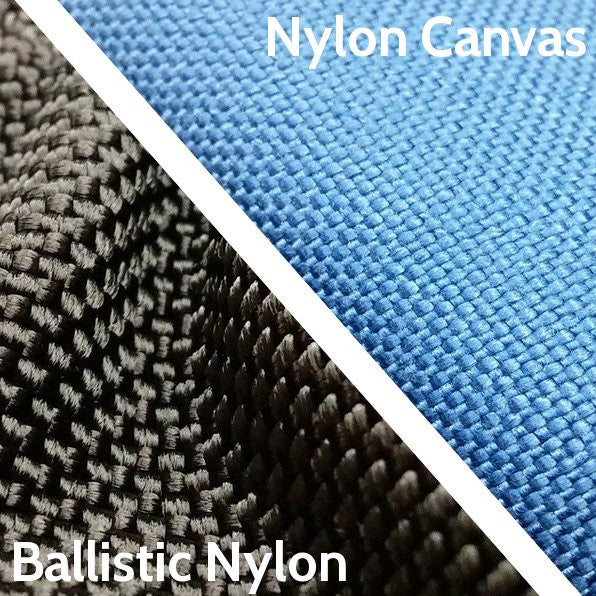
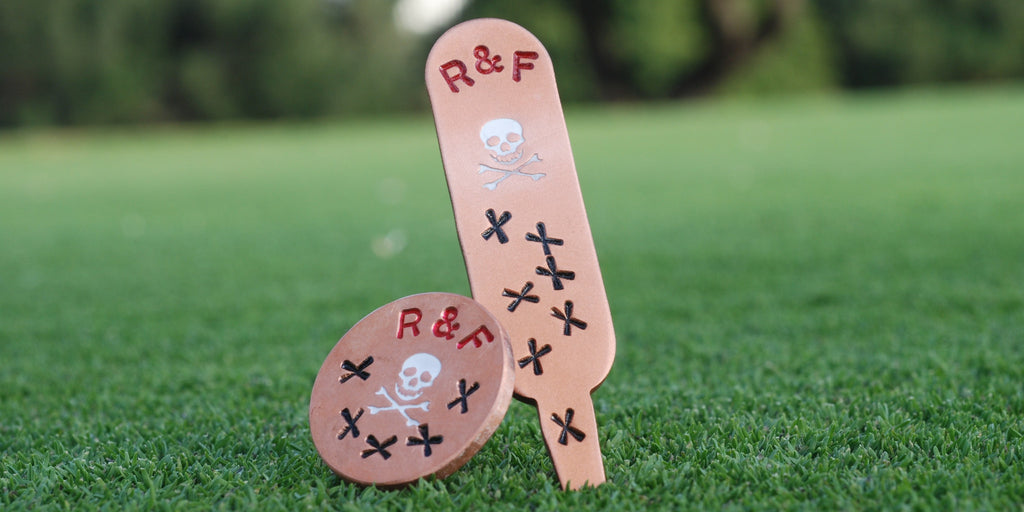
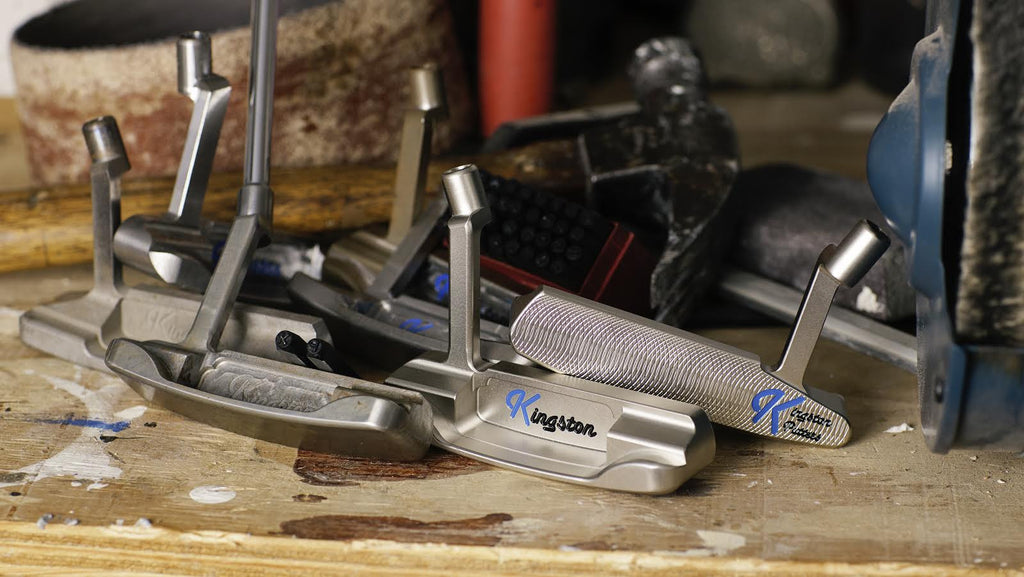
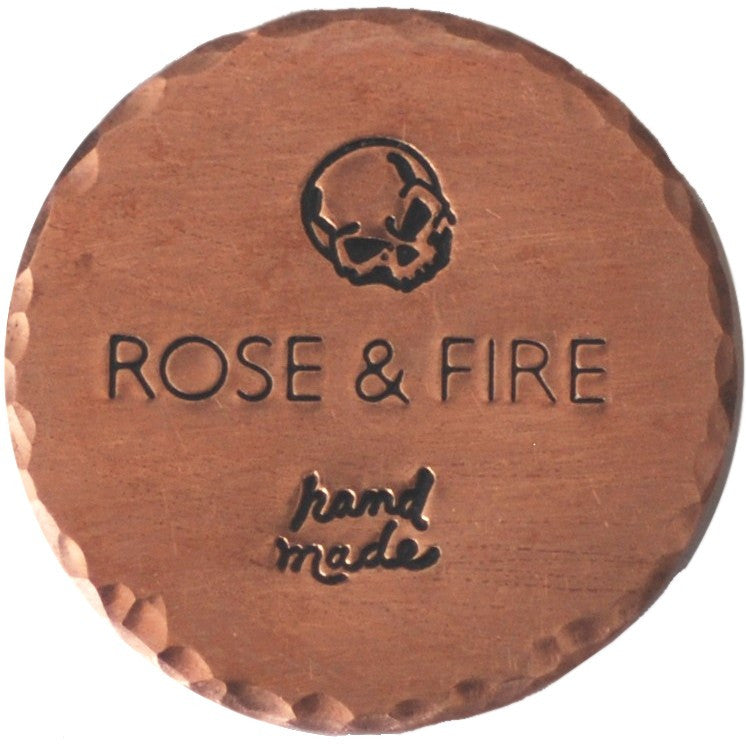
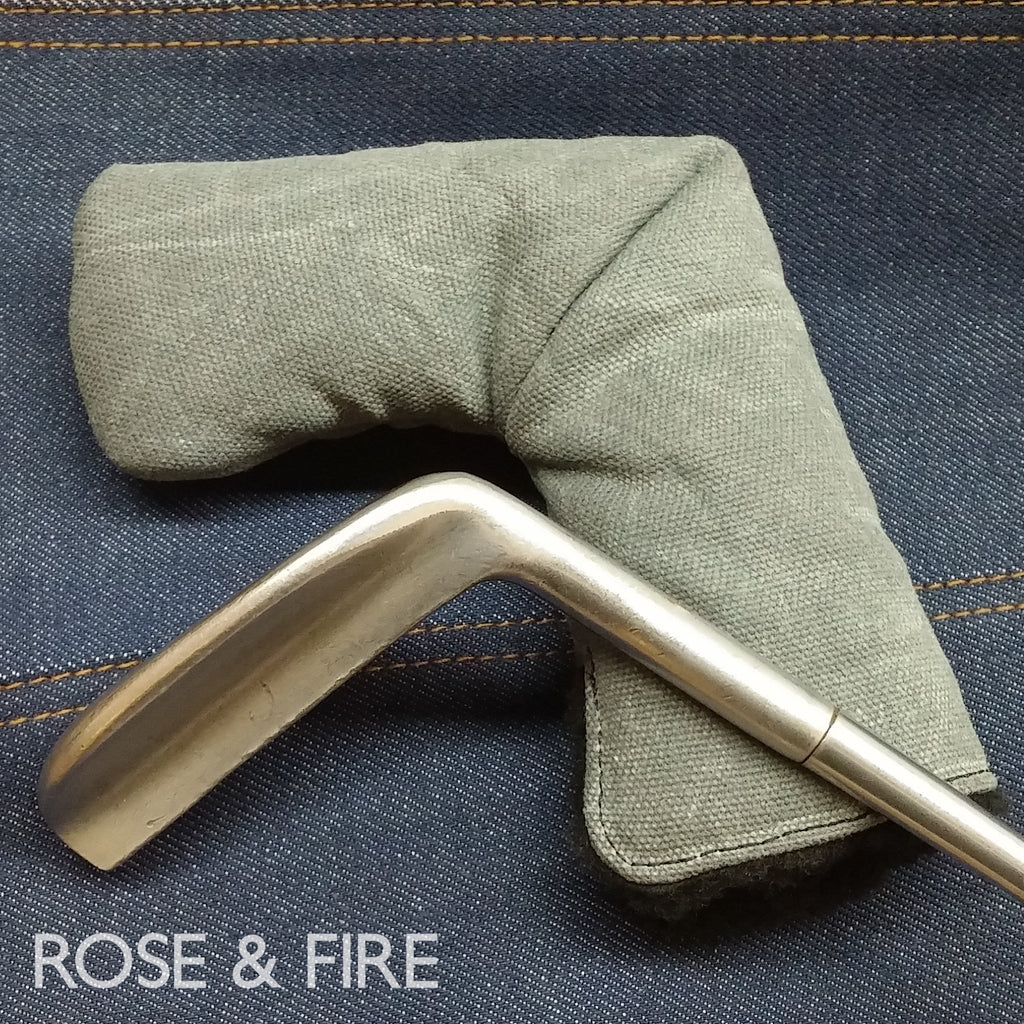
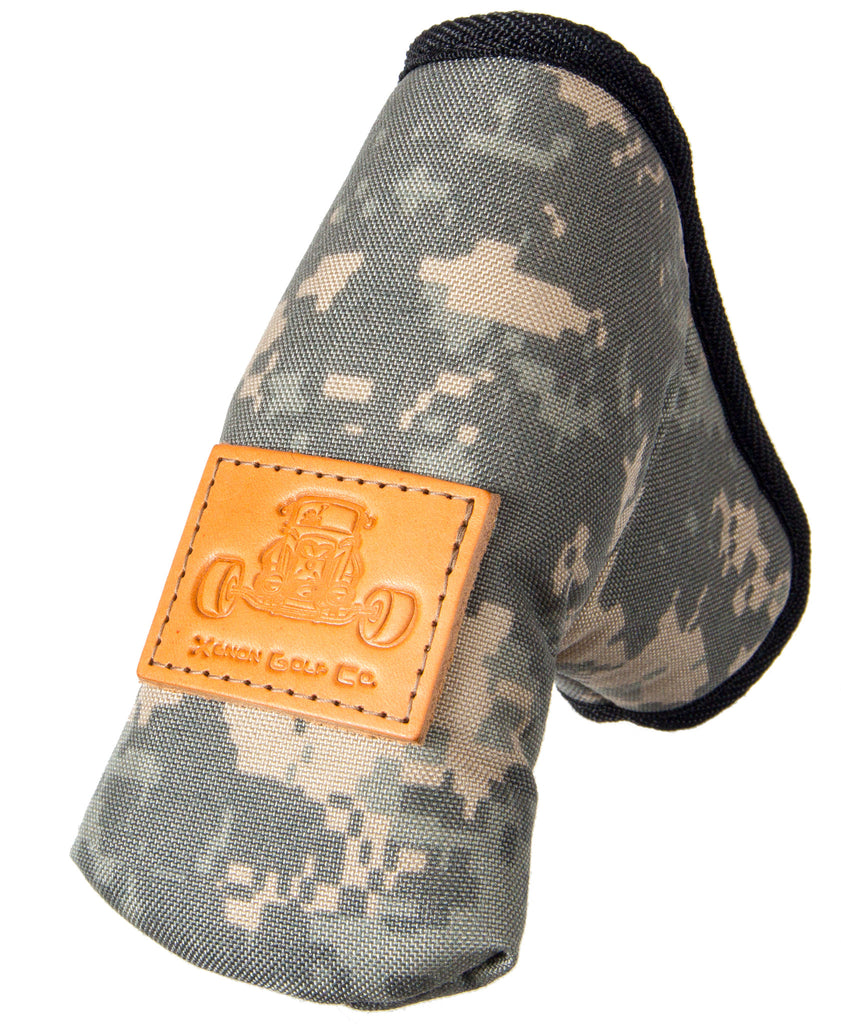
 We back our products with the Rose & Fire 30-day guarantee. Learn more
We back our products with the Rose & Fire 30-day guarantee. Learn more
 Our headcovers are handmade with pride in our California shop. This is reflected in the quality and look of our gear.
Our headcovers are handmade with pride in our California shop. This is reflected in the quality and look of our gear. Free worldwide shipping on orders over $750. Free domestic shipping on orders over $350.
Free worldwide shipping on orders over $750. Free domestic shipping on orders over $350.